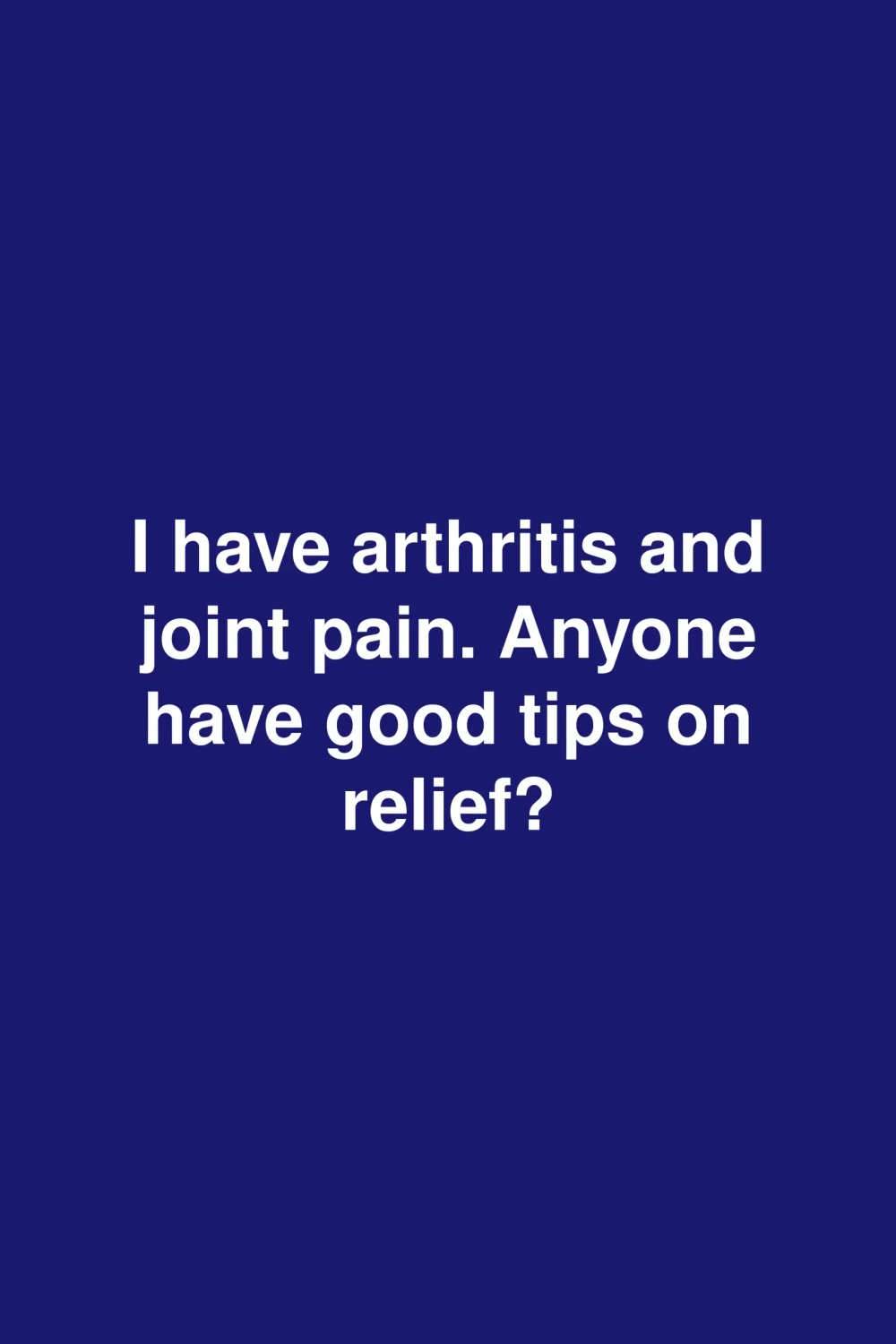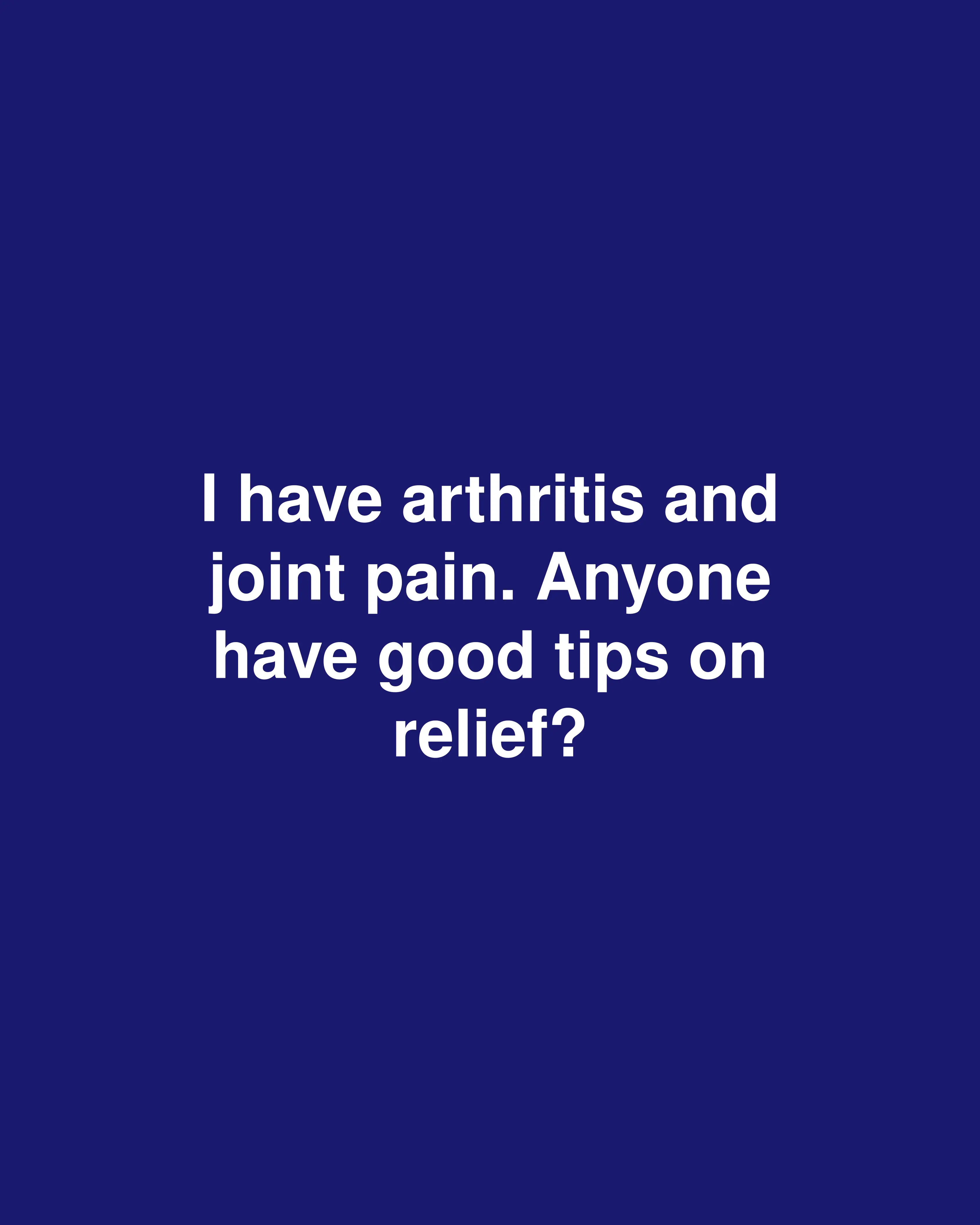Want to save this recipe?
Enter your email below and we’ll send the recipe straight to your inbox!
Living with Arthritis: Expert Strategies for Natural Joint Pain Relief
Do you wince when reaching for your morning coffee cup? Or perhaps climbing stairs has become a dreaded challenge? If joint pain and stiffness are familiar companions in your daily life, you’re certainly not alone. Millions worldwide navigate the challenges of arthritis daily, searching for effective relief beyond prescription medications.
Understanding Arthritis: More Than Just “Wear and Tear”
Arthritis isn’t simply one condition but rather an umbrella term covering over 100 different joint diseases. While osteoarthritis (often associated with aging and joint wear) and rheumatoid arthritis (an autoimmune condition) are the most common types, each form has unique characteristics and triggers.
The pain, stiffness, and reduced mobility associated with arthritis stem from inflammation within the joint capsule. This inflammation can result from various factors including genetics, previous injuries, infection, or autoimmune responses where your body mistakenly attacks its own joint tissues.
Understanding your specific type of arthritis is crucial for developing an effective management strategy. Many people experience significant improvement when they combine conventional treatments with lifestyle modifications and natural approaches.
The Anti-Inflammatory Power of Your Plate
Embrace Omega-3 Rich Foods
What you eat can either fuel inflammation or help fight it. Fatty fish like salmon, mackerel, and sardines contain powerful omega-3 fatty acids that naturally combat inflammation. Try incorporating fish into your meals at least twice weekly, or consider a high-quality fish oil supplement if seafood isn’t your preference.
Colorful Fruits and Vegetables
Dark leafy greens, berries, cherries, and orange vegetables contain antioxidants and compounds that help reduce inflammatory markers in the body. The vibrant colors in these foods signal their rich content of inflammation-fighting compounds. Aim to fill half your plate with these colorful options at each meal.
Spice Up Your Life
Certain spices do more than just flavor your food—they actively fight inflammation. Turmeric contains curcumin, a compound with potent anti-inflammatory properties similar to some medications. Ginger, cinnamon, and garlic also offer impressive anti-inflammatory benefits. Try adding a teaspoon of turmeric to smoothies, soups, or tea, paired with a pinch of black pepper to enhance absorption.
Movement as Medicine: Exercise for Joint Health
Low-Impact Cardio Options
Despite what many believe, appropriate exercise doesn’t worsen arthritis—it actually helps manage it. Water-based exercises like swimming and aqua aerobics provide cardiovascular benefits while the buoyancy of water reduces pressure on painful joints. Cycling and elliptical training also offer joint-friendly alternatives to high-impact activities.
Strength Training with Modifications
Building muscle around affected joints provides crucial support and stability. You don’t need heavy weights to see benefits—light resistance bands, body weight exercises, or even soup cans can serve as effective tools. Focus on slow, controlled movements with proper form rather than lifting heavy weights.
Flexibility and Range of Motion
Gentle stretching helps maintain and improve joint mobility, particularly important for arthritis sufferers. Yoga and tai chi combine stretching with mindfulness practices that can also help manage pain perception. Even 5-10 minutes of gentle stretching each morning can significantly reduce stiffness throughout the day.
Therapeutic Heat and Cold: Simple but Effective
When to Apply Heat
Heat therapy relaxes muscles and increases blood flow to painful areas. A warm shower in the morning can ease stiffness, while heating pads or warm towels provide targeted relief. For chronic pain, especially in the morning, heat often works best.
When to Choose Cold Therapy
Cold reduces inflammation and numbs pain, making it ideal for acute flare-ups and swollen joints. Apply an ice pack wrapped in a thin towel for 15-20 minutes at a time. Many people find alternating between heat and cold (contrast therapy) particularly effective for managing both pain and inflammation.
Common Mistakes to Avoid in Arthritis Management
Remaining Completely Sedentary
While rest is important during acute flares, extended inactivity leads to increased stiffness and muscle weakness. Even during painful periods, gentle movement like slow walking or range-of-motion exercises helps maintain function.
Relying Solely on Medication
Pain relievers and anti-inflammatory medications play an important role but work best as part of a comprehensive approach. Over-reliance on medications without addressing lifestyle factors often results in diminishing returns and potential side effects.
Ignoring Emotional Wellbeing
The relationship between chronic pain and emotional health runs deep. Stress, anxiety, and depression can amplify pain perception. Mind-body practices like meditation, deep breathing, and guided imagery can significantly improve pain management and quality of life.
Beyond Basics: Additional Natural Approaches
Topical Relief Options
Many people find relief with topical treatments containing capsaicin (derived from chili peppers), menthol, or CBD. These can provide localized pain relief without systemic side effects. A small amount applied to painful joints 3-4 times daily may reduce discomfort significantly.
Supportive Supplements
Glucosamine and chondroitin sulfate support cartilage health, while MSM (methylsulfonylmethane) may help with inflammation and pain. Omega-3 supplements, vitamin D, and turmeric extracts also show promise in research. Always consult your healthcare provider before starting any supplement regimen, especially if you take other medications.
Joint-Friendly Ergonomics
Simple modifications to your home and workspace can reduce joint strain. Ergonomic tools like jar openers, button hooks, and reaching aids conserve energy and reduce pain during daily activities. Adjusting work surfaces to proper heights and using supportive chairs can prevent unnecessary strain.
Quick Recap: Your Arthritis Management Toolkit
Managing arthritis effectively requires a multi-faceted approach. By combining anti-inflammatory nutrition, appropriate exercise, heat/cold therapy, stress management, and targeted supplements, many people achieve significant pain reduction and improved function.
Remember that consistency matters more than perfection. Small daily actions add up to meaningful results over time. Start with one or two strategies that feel most manageable, then gradually incorporate others as they become part of your routine.
Frequently Asked Questions
Can weather changes really affect arthritis pain?
Yes, many people experience increased joint pain with weather changes, particularly when barometric pressure drops before storms. While you can’t control the weather, tracking your symptoms alongside weather patterns can help you prepare with extra self-care during challenging conditions.
How long should I try natural remedies before expecting results?
Most natural approaches require consistent application over time. Dietary changes and supplements typically take 4-6 weeks to show noticeable benefits, while exercise can provide both immediate and cumulative relief. Give any new approach at least a month of consistent use before evaluating its effectiveness.
Can arthritis pain ever completely disappear?
While complete curing of arthritis isn’t usually possible, many people achieve significant or even complete pain relief through comprehensive management strategies. Periods of remission (especially with inflammatory types of arthritis) are possible, and early intervention tends to yield the best long-term results.
Should I avoid all activities that cause pain?
Not necessarily. The key distinction is between “good pain” (temporary discomfort during beneficial activities that doesn’t persist) and “bad pain” (sharp, severe pain that lasts hours after an activity). Learning this difference helps you stay appropriately active without causing harm.


